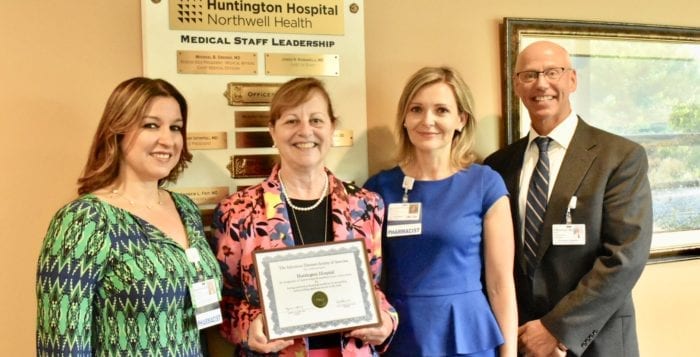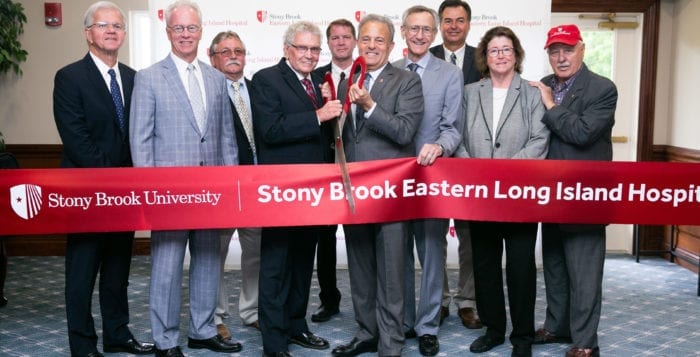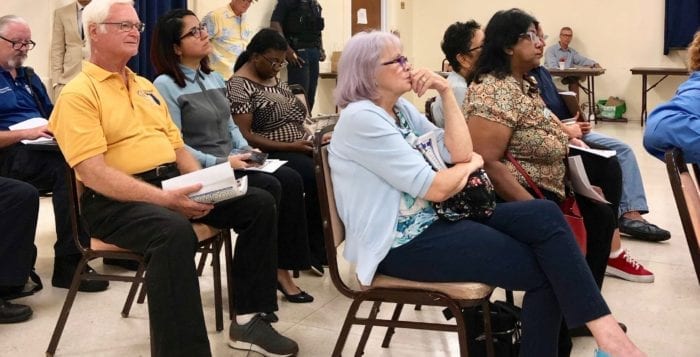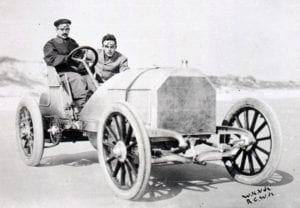By Leah Chiappino
Tracy Kosciuk, who identifies first as a wife, mother and nurse, is challenging town Councilwoman Valerie Cartright (D-Port Jefferson Station) for Brookhaven Town Council in the first district. And Kosciuk lives right down the street from the incumbent.
Kosciuk said she has been drawn to political participation since childhood, as she watched her grandmother, an active Democrat, become president of her local Democratic club.
“I got to see how politics ran,” she said.
Having once been a Democrat, she is now challenging Cartright on the Republican ticket.
“I did not leave the Democratic party, the Democratic party left me,” she said. “It’s just not the party I grew up with … I want to help make a difference and make things better and work across party lines.”
Still, she said her focus is on local issues.
Past legal history between candidates
Despite initial claims of a cordial relationship, when Cartright moved into her home in 2005, she inherited a lawsuit upon buying the property based on its property lines. The suit had been filed in the New York State Supreme Court, but ended in 2008 with the judge siding with Cartright.
Cartright had this to say about the lawsuit:
“My first interaction with my new neighbor Tracy was surrounding a baseless lawsuit over property boundaries. Having to deal with an inherited lawsuit commenced by my next-door neighbor was an unfortunate situation and I would not wish that experience on anyone moving into a new neighborhood,” she wrote via email. “I am thankful that the lawsuit was not representative of what I had to look forward to in my future years in Port Jefferson Station. Over the years, many of my other neighbors showed themselves to be welcoming, accepting and loving toward me and my family. The many positive interactions and relationships with other wonderful neighbors is what helped keep me here and led me to serve as councilperson of this amazing community.”
Kosciuk did not return multiple calls for comment.
“There are issues such as the opioid epidemic, tax increases and revitalizations that need to be done and have not been done, plaguing my area such as the opioid [crisis] that are not being addressed properly and resolved,” she said. “[Cartright] may have intentions to do things but they have not been done.”
Given the fact Kosciuk grew up in Coram, and has lived in Port Jefferson Station for 25 years, the challenger says she has deep roots in the local community. She is an active member of the Comsewogue PTA, having had all of her three children attend Comsewogue schools, as well as the Drug Task Force Committee, Port Jeff Station/Terryville Civic Association and a self- initiated member of the neighborhood watch.
Most notably, Kosciuk has been a registered nurse for over 30 years, after receiving her degree from Suffolk County Community College. She currently works in maternal care at St. Charles Hospital and has been a past representative for the New York State Nurses Association and the local union president for the last five years. She has traveled to Albany to lobby for improved working conditions.
“I know how important it is to be someone who represents something and allows members of my union to have a voice, so I know how important it is for the council district to be able to have a voice,” the challenger said. “Our district has not gotten the accountability it deserves.”
Her main initiative is to increase the effectiveness and transparency of the town council. Though she plans to continue her current role as a nurse upon election, she promises the same 24/7 attention she gives to her nurses, even pausing in the interview saying she “doesn’t like to leave my nurses hanging if they need something.”
She said she plans to help streamline the tax grievance process and have elderly residents call her office to walk them through any questions they may have, as well as advocating to get them any tax relief to which they are entitled.
As her husband is a Suffolk County police officer, she says she understands the impact of crime, especially in Port Jeff Station. Kosciuk feels that the drug epidemic is contributing to this, and that prevention education is one of the best ways to alleviate the issue.
Kosciuk added that she believes she can help to make progress of revitalization projects throughout the district she said have been pushed aside, while remaining fiscally responsible.
She cites environmental preservation as an important issue for her and promises to ensure the maintenance of local parks as well as collaboration with the “experts’ such as Stony Brook University and Department of Environmental Conservation in order to help combat erosion as well as rust or “red” tide algae, which has appeared in Port Jefferson Harbor and Conscience Bay and is known to suffocate fish and shellfish.
Kosciuk says she faces few challenges in the race.
“While campaigning, I have found that a lot of the same concerns that I had that caused me to want to run for town council are the same issues throughout the entire council district,” she said.

























